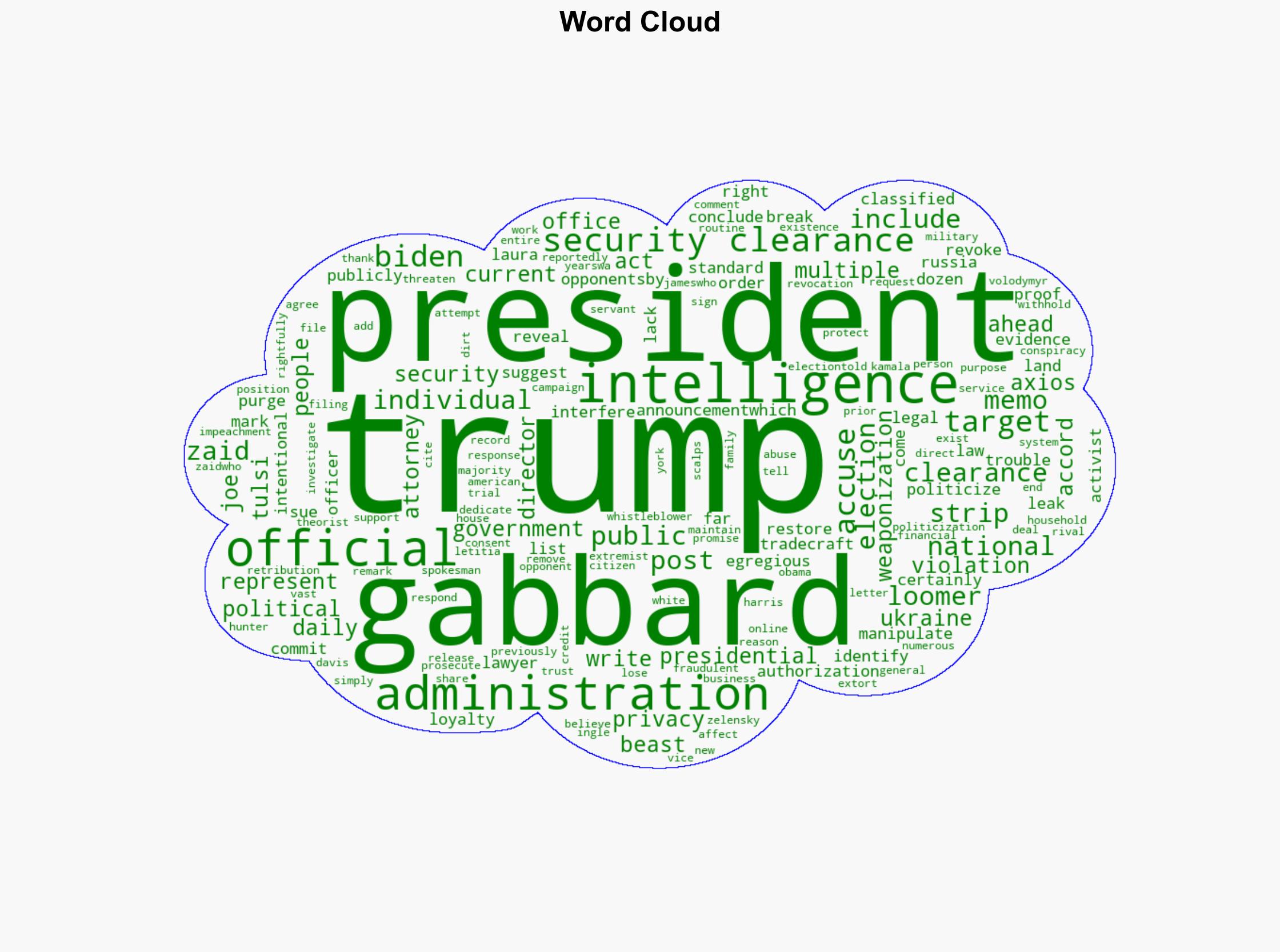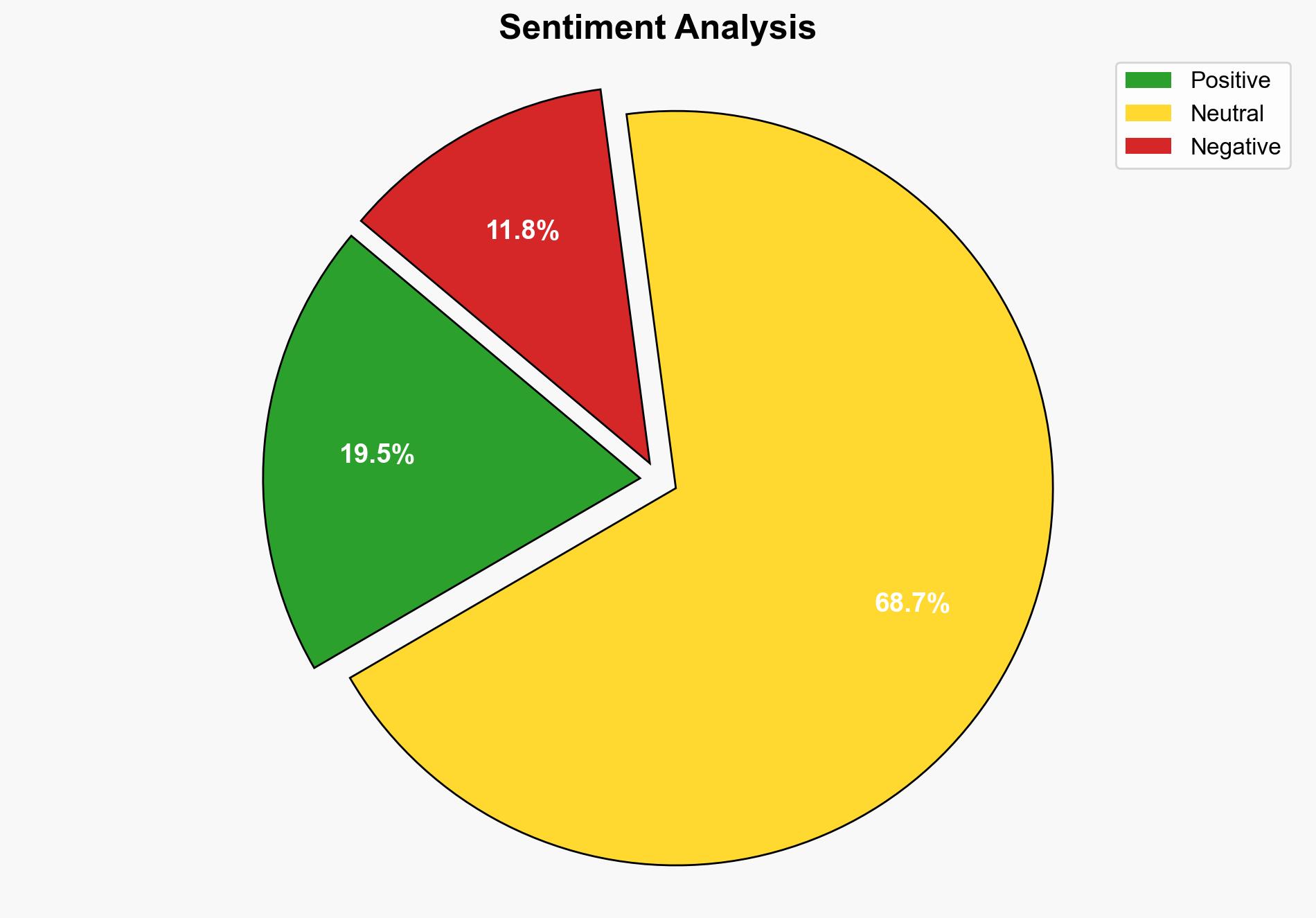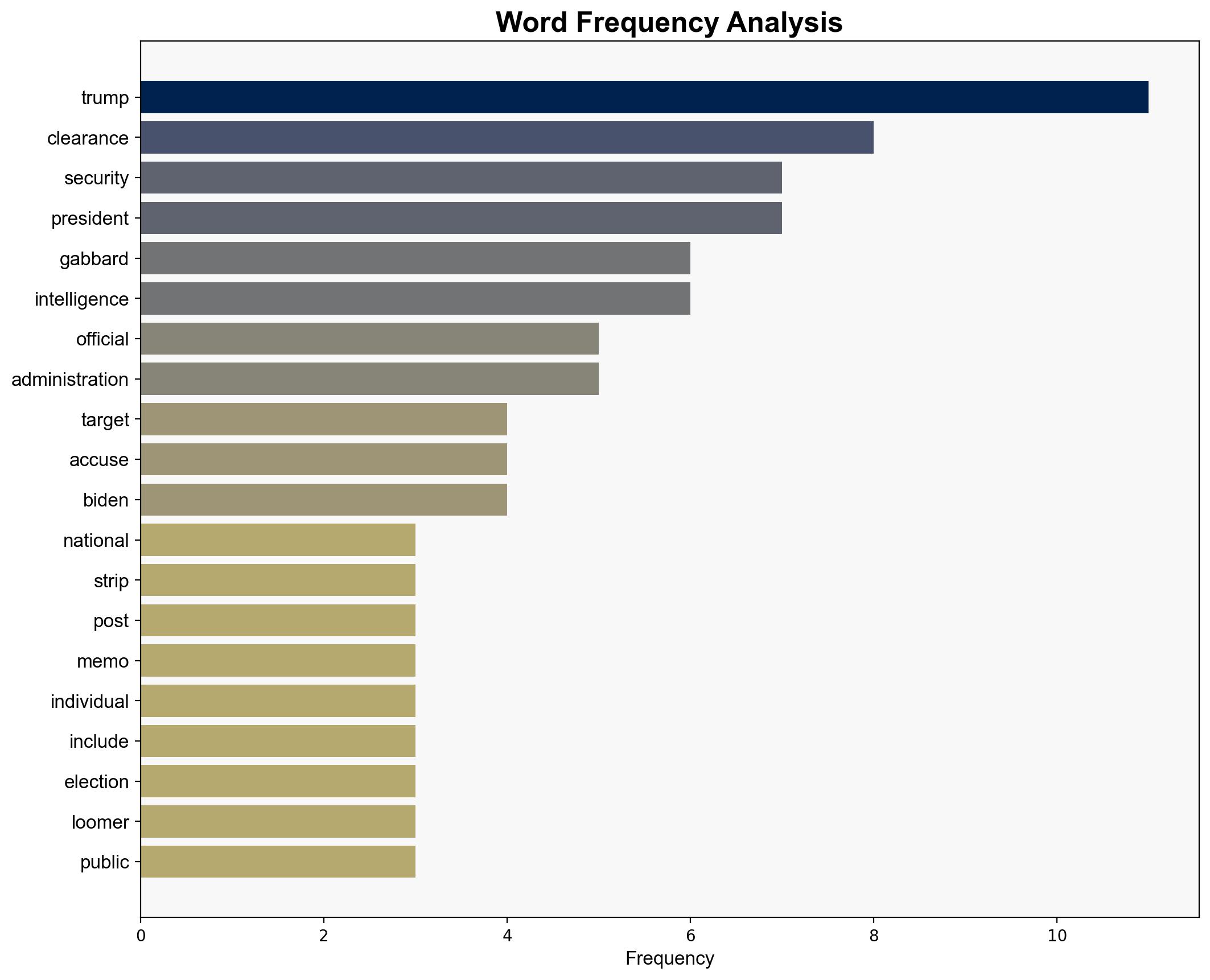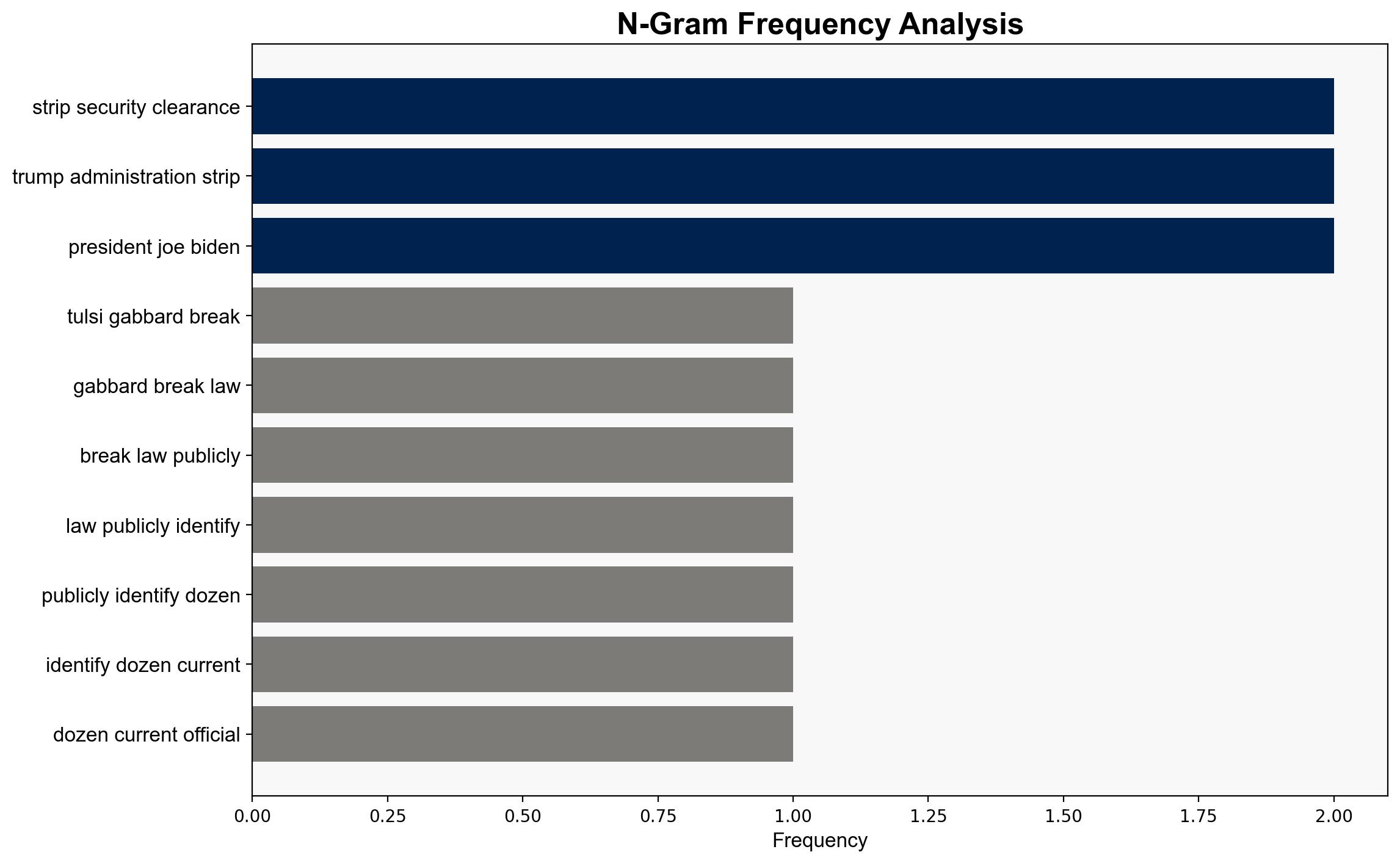Gabbards Revenge Purge Immediately Runs Into a Major Problem – Daily Beast
Published on: 2025-08-20
Intelligence Report: Gabbards Revenge Purge Immediately Runs Into a Major Problem – Daily Beast
1. BLUF (Bottom Line Up Front)
The most supported hypothesis is that Tulsi Gabbard’s actions to publicly identify and target individuals for security clearance revocation are primarily politically motivated, aimed at aligning with former President Trump’s agenda. This hypothesis is supported by the context of the memo’s release and the individuals targeted. Confidence in this assessment is moderate due to potential legal repercussions and lack of direct evidence of Gabbard’s personal motivations. Recommended action includes monitoring legal developments and potential retaliatory measures from affected individuals.
2. Competing Hypotheses
1. **Hypothesis A**: Tulsi Gabbard’s actions are politically motivated, aligning with Trump’s agenda to target perceived political opponents and critics within the intelligence community.
– **Supporting Evidence**: The memo targets individuals who have opposed Trump or are linked to investigations against him. The inclusion of figures like Kamala Harris and Letitia James suggests a pattern of targeting political adversaries.
2. **Hypothesis B**: Gabbard’s actions are driven by genuine concerns about the politicization and manipulation of intelligence, aiming to reform the system.
– **Supporting Evidence**: Gabbard’s public statements emphasize concerns about intelligence leaks and violations of tradecraft standards. The focus on reform could suggest a broader agenda beyond political retribution.
Using ACH 2.0, Hypothesis A is better supported due to the specific targeting of individuals with known opposition to Trump and the lack of substantial evidence supporting genuine reform motives.
3. Key Assumptions and Red Flags
– **Assumptions**: It is assumed that Gabbard’s actions are directly influenced by Trump’s political objectives. Another assumption is that the targeted individuals are primarily political adversaries rather than security risks.
– **Red Flags**: The release of the memo could violate privacy laws, indicating potential legal challenges. The lack of transparency about the criteria for targeting individuals raises questions about the legitimacy of the actions.
– **Blind Spots**: The motivations of Gabbard beyond political alignment with Trump are not fully explored. There is limited information on the internal decision-making process leading to the memo’s release.
4. Implications and Strategic Risks
– **Political**: Escalation of political tensions and potential legal battles could arise, affecting public trust in intelligence and security institutions.
– **Geopolitical**: Targeting intelligence officials could weaken U.S. intelligence capabilities and morale, impacting international cooperation.
– **Legal**: Potential violations of the Privacy Act could lead to lawsuits and further scrutiny of Gabbard’s actions.
– **Psychological**: The perception of intelligence politicization may erode confidence in government institutions and increase polarization.
5. Recommendations and Outlook
- Monitor legal proceedings related to the memo’s release for potential policy implications.
- Engage in dialogue with intelligence community leaders to assess morale and operational impacts.
- Scenario Projections:
- **Best Case**: Legal challenges are resolved without significant impact on intelligence operations.
- **Worst Case**: Prolonged legal battles and political fallout lead to decreased intelligence effectiveness and increased polarization.
- **Most Likely**: Legal challenges proceed, but intelligence operations continue with minor disruptions.
6. Key Individuals and Entities
– Tulsi Gabbard
– Donald Trump
– Kamala Harris
– Letitia James
– Laura Loomer
– Mark Zaid
7. Thematic Tags
national security threats, cybersecurity, counter-terrorism, regional focus




